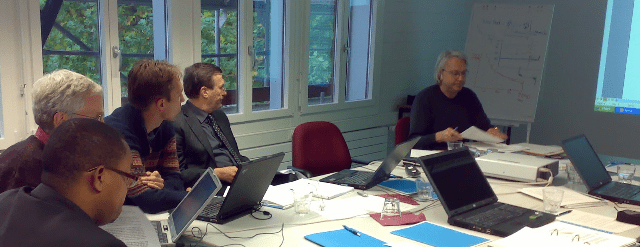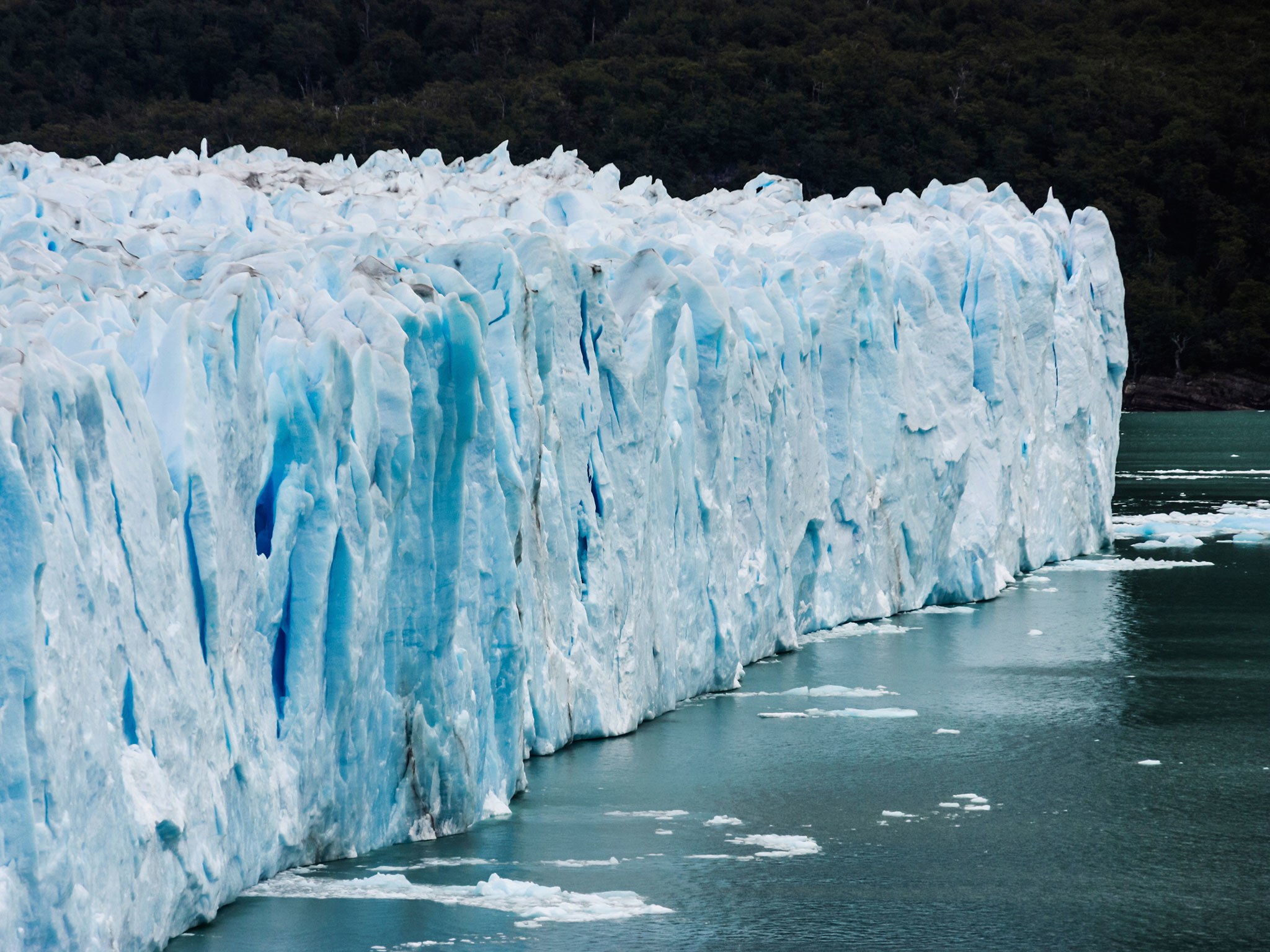Imagine now, for a moment, that you go to a technical conference. First of its kind. Almost 150 people are there. Outside the windows we can see Lake Kivu. It’s all calm, pristine. Its blue waters lapped on the sandy beach. But everyone’s aware of strange, unexplained things in the deep. The stories were apocryphal, swimmers disappear, boats sink. So with lots of scientists invited, government staffers too, business people, we could learn. Some 20 countries are represented, maybe 25. Two nations were there, neighbours. But they had not been on speaking terms for years due to wars and even genocide. Quite enough tension and uncertainty at the start. This is where the “Management Prescriptions” started.

Still waters run deep in Lake Kivu
The professors spoke, a mix of authority and leading questions. There were limnologists, volcanologists, environmentalists, hydrologists. Scientists came with questions and their own answers, each setting their stalls as a subject authority. Each seemed sure of their standing; the pre-eminence of their ideas and interpretation. Government teams introduced themselves and let us know they were there to listen. Diplomats and multi-lateral agencies were there to listen too; the subject was complex and no-one seemed sure who actually had the answers.
What had to be agreed in the document?
All of us knew there was much to figure out in reaching consensus and common purpose. We’d heard about dangers, volcanoes and gas eruptions. Going in I only knew few of the attendees, all Ministry of Energy staffers.
This February 2007 conference was between the two countries bordering Lake Kivu, the DRC and Rwanda. The workshop in Gisenyi was held on lake Kivu’s shores. Indeed, the location was a constant reminder to discuss its safe development. The government of Rwanda had opened a cal five years earlier for developers to start producing gas for power. But studies undertaken showed early evidence that competing ideas on how to do that were uncoordinated. At worst they could be conflicting each other’s operations.
As day one rolled into day two, questions started to outnumber answers. And the answers did not all agree. The 1975 data was dated, but some more recent data from 2004 surveys was being interpreted. However some ideas clashed, understandings were at odds. But if anyone had hoped that we’d all come away with all the answers, they were wrong. We now knew more about what we didn’t know than we’d thought beforehand.
Why did we need them?
During that workshop, the two countries signed an MoU on next steps to be taken to establish the bilateral institutional framework. The framework was to be for the monitoring of Lake Kivu, for the safety of the population and for the environment. The starting point of reference was the 1986 “Socigaz” document that had been bilaterally agreed to govern the use of Lake Kivu for gas extraction.
But circumstances and design ideas had changed since then. The program was primarily to discuss the issues at play in organising more coordinated development of the lake and how to confirm or modify the older Socigaz regulations. The organisers also wished to table new data, new issues and further define the rules of use of the lake. Indeed, the core theme was again to promote lake safety.
But for coordination, the conference had to agree on how establishing common purpose and regulate it. As the conference entered its last session, time had run out to complete this objective. The convener co-opted a group of five experts to extend the discussion “for a few hours or days” and then report back to the organisers. This ad-hoc team of experts reviewed and considered acceptance the current version of rules. Their report-back would confirm their findings.
The series of meetings on Lake Kivu
This Expert Working Group of scientists and technicians reviewed the Socigaz document. But the group rejected its validity as a basis for further development of Lake Kivu. The consensus was that the document was insufficient and too simplistic for the purpose. This group then resolved to work on the new version of the rules and regulations for safe gas extraction from Lake Kivu.
In fact, the exercise extended by over six months. By then it was apparent that agreement was becoming more difficult. Many more issues and concerns arose from deeper analysis. Two schools of thought arose. The team started to question the technical premise on how degassing the lake would be done. At the core of the investigation, the team questioned whether the “legacy” method destroyed the natural safety structure, leaving it unsafe for the long term.
Finalising the MP document
EAWAG organised a follow-up conference in Kastanienbaum, Switzerland in October 2007. In it, the parties made significant progress in understanding impacts of extraction methods. They drafted an early version of the discussion. Later in May 2008, COWI facilitated a further conference of the Experts. John Boyle led the team’s first draft the Management Prescriptions for Lake Kivu Development. Dr Finn Hirslund of COWI hosted the event in Copenhagen, Denmark with World Bank sponsorship. The parties agreed to repeat the exercise a year later in Copenhagen to finalise the document.
The outcome of three years of work later was this key document. Then in June 2009 the experts and conveners of the conference issued as the Management Prescriptions for Lake Kivu Development.
Introduction to Management Prescriptions
1.1 Safe gas extraction in Lake Kivu

Countour Mapping of Lake Kivu Bathymetry and Mountains
The governments of Rwanda and the DRC wished to engage leading experts to explore beneficial ways of exploiting the methane resource in Lake Kivu. It needed to be in a safe, environmentally sound, yet economically profitable way. Reduction of the methane and carbon dioxide content of the waters of lake Kivu was necessary to reduce the risk of sudden eruption of these gases. Minister Albert Butare was Minister of State for Energy in Rwanda. In his role he reached out to all stakeholders, including the Ministry of Hydrocarbons in the DRC.
1.2 Rationale for the conferences
Since the signing of the bilateral MoU, the Expert Working Group has elaborated a Management Prescriptions document. This document delineates basic principles for determining the size, number, location and design of extraction operations. Indeed, it establishes mandatory requirements and guidelines for any gas extraction plant’s design and operation.

Copenhagen 2008 & 2009 Conferences Location
Also, the NCEA has provided further advice through its “Advice on Harvesting the Methane Resource and Monitoring the Stratification of Lake Kivu” of 27 August 2007. NCEA also provided its secretariat memo of February 2008. This was on a strategy and action plan for monitoring in Lake Kivu Monitoring, which includes required institutional steps. Meanwhile, the Rwandan government started the extraction of methane through its KP1 pilot plant.
Given that gas extraction operations involved high risk, they need to be done according to agreed-upon safety standards. But without having a bilateral legal and institutional context in which to operate. Thus the Government of Rwanda decided to call for a second conference. Indeed the topic was on safe gas extraction from Lake Kivu. Therefore the conference proceeded in order to come to such arrangements.
1.3 Conference objectives & outcomes

Structure of Management Prescriptions Document
Besides an exchange of most recent collective knowledge and insights, the conference’s objectives were two-fold:
(i) To agree on the need to establish a bilateral authority with regulatory mandate over Lake Kivu. The conference reached agreement on a road map towards it’s establishment and operational mandate;
(ii) To validate and adopt the Management Prescriptions document that the Expert Working Group prepared over the past two years.
Mr. John Boyle (World Bank) coordinated the ad-hoc Expert Working Group from March 2007 to May 2008. The expert working group members were: Dr Finn Hirslund, Mr Philip Morkel and Dr. Klaus Tietze. Then Dr. Martin Schmid and Prof. Alfred Wüest later joined the group.
John Boyle had left the Group before the May 2009 meeting of the experts and interested parties. Philip Morkel assumed the role as scribe for the final document for issue.

Notes on the Workshop Report May 2009:
http://www.eia.nl/docs/os/i03/i0365/workshop_report_may_2009_final_version_17_june_2009.pdf
Rwanda’s ESIA Profile:
http://www.eia.nl/en/countries/rwanda/esia-profile




